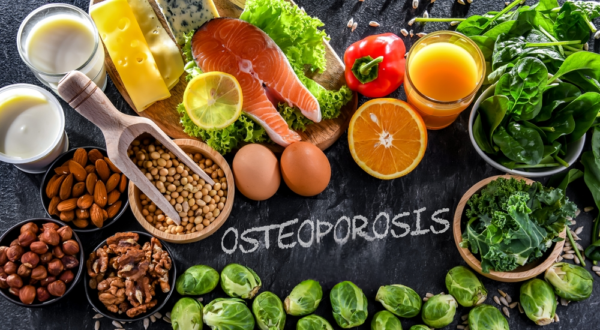I know nutrition can help with conditions like heart disease and diabetes, but what about arthritis. Will changing my diet help my condition?
I’m sorry to hear about your arthritis but am happy to report that there are definitely things you can do nutritionally to protect against the development of the condition or lessen the severity of symptoms. Simply put, arthritis is inflammation in the joints that worsens over time. Several types of arthritis together affect millions of Americans and limit their daily activities. So, what’s the nutritional approach to help with the inflammation of arthritis? An anti-inflammatory diet. Here are key elements to keep in mind.
Out with the Bad — Foods that Promote Inflammation
Higher intake of meat and alcohol contributes to increased inflammation in the body. Lower consumption of vitamin C in fruits and vegetables, whether in combination with high meat and alcohol intake or not, also contributes.
In with the Good – Foods that Help
Evidence suggests that increasing consumption of vitamin C, vitamin D found in fatty fish, omega 3s found in ground flaxseeds and flaxseed oil, and nutraceuticals such as glucosamine and chondroitin may help with arthritic symptoms. Phytochemicals found in a wide variety of foods such as fennel, garlic, basil, rosemary, pomegranate, turmeric, red pepper, cloves, anise, and ginger can also fight inflammation.
Lighten Up
For osteoarthritis in particular, weight loss is effective because excess weight strains the joints. As little as a 5% reduction in weight from a sensible diet— in an overweight person — can bring an 18% gain in overall functioning. While it’s not recommended that people at a healthy weight attempt to lose weight, everyone benefits from vitamins A, C, D, E and omega-3s.
Translating it to the Kitchen Table
The anti-inflammatory diet isn’t new. In essence, it’s similar to the Mediterranean diet, which has myriad health benefits beyond reduction of inflammation. The recommendations from the Academy of Nutrition and Dietetics include:
- Fish: 3-4 oz. fatty fish (cold water fish like salmon, tuna, scallops, sardines, herring) twice a week. If you’re not a fish fan, try taking 600-1,000 mg of fish oil daily. Omega-3s found in these foods and supplements can help with pain, swelling, stiffness, and tenderness.
- Nuts: 1 ounce per day to provides benefit from vitamins B6 and Omega-3s. Choose walnuts, almonds, pistachios, or pine nuts.
- Fruits and vegetables: Nine or more 1-cup servings per day helps due to the antioxidants and phytochemicals they offer. Quick tip — the brighter the color, the higher the antioxidants, so choose broccoli, spinach, kale, blueberries, cherries.
- Beans: 1 cup at least twice per week. Beans contain fiber and phytonutrients that can help lower a key marker of inflammation in the blood, and are filled with protein which helps with muscle health. Best choices include red kidney beans, pinto beans, and small red beans.
- Whole grains: 6 oz. of grains per day (at LEAST 3 oz. should be whole grains). A serving boils down to a cup of cooked brown rice or one slice whole grain bread. Much like beans, the fiber here is key.
- A word about night shade vegetables: Some people report more pain when consuming tomatoes, eggplants, potatoes, and red bell peppers, sometimes referred to as nightshade vegetables. If they cause discomfort for you, avoid them. Otherwise, feel free to eat them as they contain antioxidants, vitamins, and minerals!
By following an anti-inflammatory diet, you can keep inflammation and arthritic symptoms at bay. As always, it’s important to talk to your doctor or healthcare team about supplementation and what’s the best fit for you.
Meg Whitbeck, MS, RD, counsels patients in disease management through nutrition. For more information or to schedule a private consultation, contact RVNAhealth at 203-438-5555





